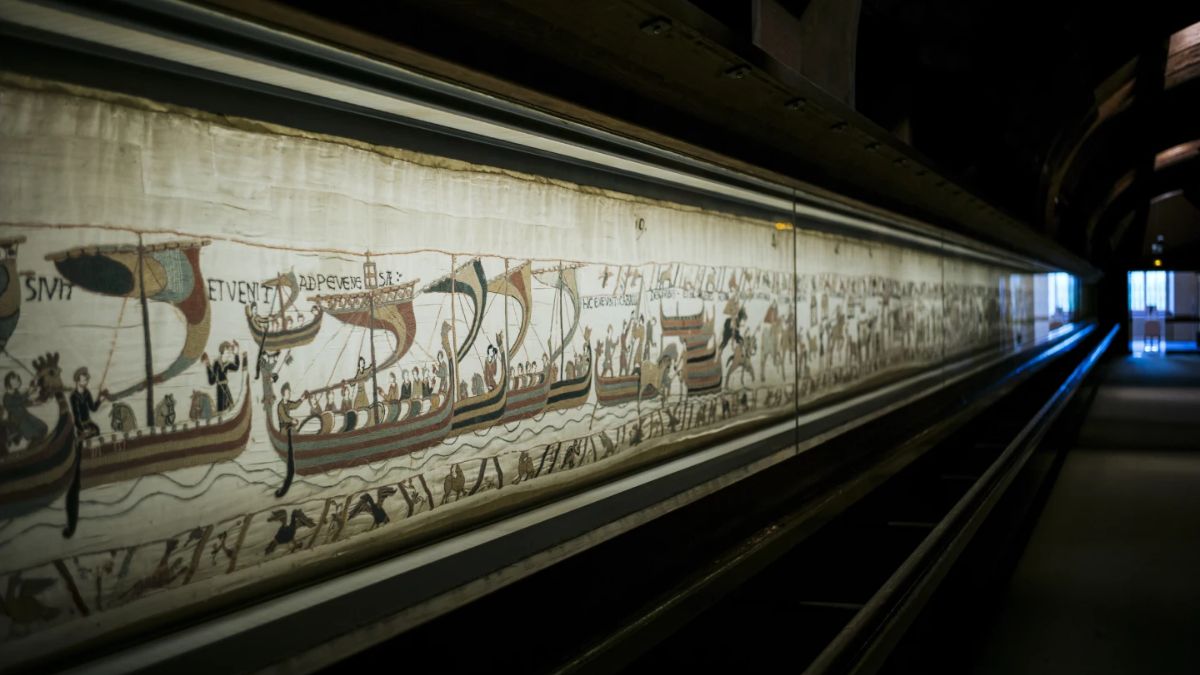The Bayeux Tapestry is set to visit the UK.
The tapestry, which was created in the 11th Century, will be loaned to the UK as part of an agreement between Prime Minister Keir Starmer and French President Emmanuel Macron.
The 70-metre tapestry will go on display at the British Museum in London next year in exchange for the Anglo-Saxon treasures of the Sutton Hoo ship burial, the Lewis chessmen and other pieces.
The historic artwork is set to be displayed from 2026 till July 2027, as its usual home the Bayeux Museum undergoes extensive renovations.
This period also notably coincides with the 1000th anniversary of William the Conqueror’s birth in 2027, reported BBC News.
Here are some things you should know about the painting.
The history of the painting
The artwork depicts the Norman invasion of England and the Battle of Hastings, where William the Conqueror won the English throne from Harold Godwinson and became the first Norman king of England.
This changed the history of England, France and Europe.
The origins of the painting are a matter of speculation.
While some claim it was designed and made in England, others say Bishop Odo of Bayeux commissioned the work in 1077.
Odo was the half-brother of William the Conquerer. He is said to have done so to decorate a newly-constructed cathedral in Bayeux, a town within France’s Normandy region.
No one knows who weaved the tapestry.
According to Unesco, the tapestry is 70 metres long, 50 centimetres wide and weighs a whopping 350 kilogramme.
It has been listed in Unesco’s Memory of the World Register.
Embroidered story
Embroidered in wool thread, the tapestry comprises nine panels.
The work is an “embroidered story”, said Antoine Verney, head conservationist at the Bayeux Museum.
The tapestry features 626 characters, 202 horses and 58 scenes – an embroidered epic recounting the events leading up to William’s conquest at the Battle of Hastings, in which England’s King Harold famously died after taking a French arrow in the eye.
Restoration work
The tapestry, which was last repaired in 1870, is in need of restoration. The cost of restoring it has been estimated at around two million euros (around Rs 18 crore).
In January, French Culture Minister Rachida Dati said the government would foot the full bill. But that project is now on hold, the Bayeux Museum told AFP on Tuesday (July 8). An expert study in 2020 found around 24,200 stains and 10,000 holes in the artwork.
The work is sensitive to micro-vibrations, handling and humidity, and must not receive more than 50 lux, a very dim light, said Verney.
Museum upgrade
Since 1983, the tapestry has been displayed in a long U-shaped hall. The Bayeux Museum, which received 429,000 visitors last year, is planning a 38 million euro renovation from 2025 to 2027.
Unprecedented loan
It will be the first time the tapestry has been loaned to England, after two aborted plans: Once in 1953 for the coronation of Queen Elizabeth II, and once in 1966 for the 900th anniversary of the Battle of Hastings.
The tapestry has only left Bayeux twice, to be displayed at the Louvre in Paris.
This first time occurred in in 1803 on Napoleon’s orders and the second in 1944 as tribute to the British and US troops who fought to free France from Nazi German occupation.
With inputs from AFP
)